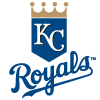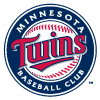With the series' halfway mark in the rearview mirror, we'll travel to the American League Central to examine some of the division's most divisive pitchers.
Part One: NL West, Balance
Part Two: AL West, Posture
Part Three: NL Central, Momentum
Our mechanical compass turns to the subject of torque this week. Torque is one of the two power grades, along with momentum, and is the last of the four baseline subjects on the mechanics report card. It can also be the toughest grade of the four baselines to evaluate because it occurs in such a narrow timeframe.
Torque
Torque is the driver of velocity. Also referred to as hip-shoulder separation, torque describes the relative degree of load that a pitcher achieves just before he fires the upper-half, which triggers arm acceleration into release point. A good way to think of hip-shoulder separation is to imagine one broom-handle through the pitcher's shoulders and another that runs through the pitcher's hips. Consider the following images:

The images were generated by yours truly from the 3D motion capture system that we had at the National Pitching Association. The skeleton represents a live pitcher who was being captured under a 10-camera system that allowed us to view the delivery from any angle in 3D. The birds-eye view of the pitcher is ideal in this case, as it shows separation between the broom-handles as the hips rotate, forming an X-shaped pattern in which the acute vertical angles represent the player's torque.
Hip rotation continues to
With the series' halfway mark in the rearview mirror, we'll travel to the American League Central to examine some of the division's most divisive pitchers.
Part One: NL West, Balance
Part Two: AL West, Posture
Part Three: NL Central, Momentum
Our mechanical compass turns to the subject of torque this week. Torque is one of the two power grades, along with momentum, and is the last of the four baseline subjects on the mechanics report card. It can also be the toughest grade of the four baselines to evaluate because it occurs in such a narrow timeframe.
Torque
Torque is the driver of velocity. Also referred to as hip-shoulder separation, torque describes the relative degree of load that a pitcher achieves just before he fires the upper-half, which triggers arm acceleration into release point. A good way to think of hip-shoulder separation is to imagine one broom-handle through the pitcher's shoulders and another that runs through the pitcher's hips. Consider the following images:

The images were generated by yours truly from the 3D motion capture system that we had at the National Pitching Association. The skeleton represents a live pitcher who was being captured under a 10-camera system that allowed us to view the delivery from any angle in 3D. The birds-eye view of the pitcher is ideal in this case, as it shows separation between the broom-handles as the hips rotate, forming an X-shaped pattern in which the acute vertical angles represent the player's torque.
Hip rotation continues to take place after foot strike, and that separation increases until the pitcher fires the upper-half (broom-handle for the shoulders). A pitcher increases torque by delaying his trigger of trunk rotation, gaining more separation as the hips rotate. A pitcher can also load the upper-half to create separation with the shoulders, either with a torso-twist away from the hitter or with a pronounced scapular load, in which the back-side shoulders pinch together. Some players lean heavily on this upper-half separation, while others rely much more on hip rotation and a delayed trigger. The majority of big-league starters fall somewhere between either extreme with an approach closer to 50/50 in terms of hips and shoulders.
A pitcher's maximum torque is fleeting, occurring at the instant before he triggers the upper-body into trunk rotation, and the hips continue to rotate during and after the moment of highest hip-shoulder separation. The split-second of maximum torque receives most of the attention, and the narrow timeframe makes it particularly difficult to sofa-scout a pitcher's torque. Typical television angles are very poor for evaluating hip-shoulder separation and the target event is so brief that it is often missed by standard video feeds. One might break down a pitch frame-by-frame and still miss the moment of max torque. That said, a pitcher's methods for generating torque can be seen from the comfort of your own home, and a trained eye can learn a lot about a pitcher by anchoring on that small time window.
The connection between pitch-speed and torque might be the most reliable link in the world of pitching mechanics, and the bond becomes clearer when looking at the extreme poles of the velocity-torque spectrum. At the top of the pyramid is Aroldis Chapman, whose record-breaking velocity is supported by the biggest torque that I have ever seen. He earns an 80-grade by default, but Chapman breaks the torque scale with his massive hip-shoulder separation.

At the bottom of the scale is Mark Buehrle, owner of a mid-80s fastball along with hip-shoulder separation that is nearly non-existent. Buehrle has late hip rotation yet early trunk rotation, firing hips and shoulders nearly in unison as if they were wired together.

The vast majority of the pitchers under today's microscope will score well in the torque category, given that A) this is a list of intriguing fantasy pitchers, B) strikeouts rule the day in fantasy and C) strikeouts are highly correlated with velocity. There is another interesting trend in torque, as the bar has been raised over the years with pitchers continuing to generate more hip-shoulder separation and throw harder as a population, such that 60-grade torque of ten years ago would be less impressive than 60-grade torque today. After all, the report card is based on the idea that a grade of 50 is major-league average (with a standard deviation of 10 points), so by definition that value can be a moving target. I have had to adjust my personal scale over time and this subject has required the most adjustment on the report card.
(stats for stuff provided by Brooks Baseball)
Carlos Rodon

There's obvious intrigue at the top of the Chicago rotation, but you don't need me to tell you about Chris Sale (though his mechanics deserve their own article). From a fantasy perspective, the most intriguing pitcher on the White Sox staff is Rodon, who debuted in the majors after just 34.2 innings in the minors.
Stats: Rodon walked too many batters last season, checking in at 11.7 percent for his walk rate (4.6 BB/9), but the free passes were offset by a strikeout-per-inning and a 3.75 ERA that was slightly better than league-average. Considering that Rodon basically went from college straight to the majors, it's understandable if he was stepping up the power in his first pro season at the expense of pitch command, or if the greenhorn had a few items left to tick on his developmental agenda.
Stuff: The left-hander pumped gas at a shade under 94 mph on average last season, mixing a four-seamer and sinker that combined for a 60 percent frequency. The pitch-speed is plus for a southpaw, but his strikeout instigator was a sweeping slider that was responsible for nearly 70 percent of his punchouts last season. Rodon throws a hard slider with lateral movement, with the pitch bordering on a cutter at times. He mixed in a changeup against right-handed bats but the pitch was hit hard in a limited sample.
Mechanics: The overall delivery is very efficient, especially for a young hurler, and it can only be considered a good thing that he was thrust under the wing of White Sox pitching coach Don Cooper so quickly in his pro career. Rodon carries plus torque when he lines up the gears of rotation, utilizing a 50/50 combination of hips and shoulders, with an upper-body load combined with a solid delay to his trigger after foot strike.

Danny Salazar
Pretty much the entire Cleveland rotation carries intrigue for one reason or another (Kluber-Carrasco-Bauer-Tomlin), but Salazar earns the nod because might have the most room between his theoretical ceiling and floor of performance.
Stats: Salazar finished the year averaging more than a K-per-inning for the third straight season at the highest level. His walk rate has held firm but he is coming off his best campaign at 7.0 percent, and though his K/9 went down slightly (9.8 to 9.5), his strikeout percentage actually showed a slight improvement (from 28.3 to 28.8 percent) as his increased efficiency led to fewer batters faced on a per-inning basis.
Stuff: Salazar's average heater checks in at nearly 96 mph and he uses the four-seamer to generate more than one-third of his strikeouts, but his trap-door splitter guides his approach when a strikeout is in order, upping the split frequency near 40 percent in two-strike counts. He struck out triple-digit batters in plate appearances that ended on the split last season, with opposing hitters managing just a .144 average and .069 ISO against the pitch last season.
Mechanics: Salazar takes advantage of both the upper and lower-halves to increase hip-shoulder separation, but his upper-body load pails in comparison to the contribution from his hip rotation. His pronounced delay of trunk rotation (after foot strike) and quick hip rotation reach an impressive maximum, earning Salazar a 65-grade for his torque at peak. The amount of hip rotation is even more impressive when considering that Salazar has a closed stride.

Justin Verlander
Turn the clock back one year, and Verlander was a cautionary tale about how the mighty had fallen. His start to the season was delayed by injury and the right-hander didn't make his 2015 debut until June. He struggled to shake off the rust, giving up at least six earned runs in three of his first six starts, carrying a 6.62 ERA into his seventh start of the season. He turned it around in the second half, including a 2.80 ERA in 103.0 innings that has enticed some fantasy gamers to jump back on the bandwagon.
Stats: He regained some of the bat-missing qualities that had deserted him in 2014, but his 21.1 percent K-rate was still a far cry from the 25 percent marks he was putting up in his prime. Verlander's line was spared by the second-best walk rate of his career (6.0 percent), but without the strikeouts he has little margin for error and his line could suffer greatly if he can't replicate the control of last season.
Stuff: Verlander's average velocity basically held firm with the disappointing numbers of 2014 (93.9 mph average), with radar-gun readings that are merely above-average rather than putting him among the top starting pitchers in the league. He can still reach back for 96 mph on occasion, but the big change to his game was better command of his pitches across the board. Keep an eye on his curveball, as the former 70-grade pitch was hammered in 2014, and though it rebounded a bit last season, the results were nowhere near the pitch's dominance from earlier in his career.
Mechanics: Much of Verlander's command problems in 2013 and 2014 were related to a stride that was a bit askew and the havoc that it wreaked on his release point. It looked as if an invisible wall was set up on the third-base side of the mound, and Verlander would drift away from the imaginary wall during the stride phase of his delivery. The right-hander used to earn a 65-grade for his torque but he might currently lack the flexibility of youth, as the magnitude and consistency of his torque left the building last season.

Yordano Ventura
2015 was supposed to be the year that Ventura took his throne atop the Royals' rotation and didn't look back, but he hit a few snags along the way. The young right-hander saved his best performance for the end of the season, helping to propel KC to the title and spare his final stat-line for the regular season.
Stats: Regardless of how things finished, fantasy managers were drenched in disappointment following Ventura's 2015 season, but much of that disappointment was likely rooted in outlandish expectations. His K and walk rates actually improved last season while his ERA ballooned by 0.88 runs (his FIP was nearly identical in both seasons). There's still upside here, especially if we look past the run prevention, given that his career K rate of 21.2-percent is much lower than one would expect from one of the game's hardest-throwing pitchers.
Stuff: Ventura is best known for his blazing fastball that has hit triple digits with regularity in the past. The heater lost a bit of smoke last season, dropping from a league-best average of 98.2 mph to a still-elite 97.1 mph (fourth-highest among starters), though his velocity drop takes on an added glare given the important role that pitch-speed plays in his value. His best weapon is actually the curveball, a mid-80s breaker that has dominated his strikeout totals and kept opposing batters to a meager .163 batting average and .098 ISO during his career.
Mechanics: Unsurprisingly, one of the hardest-throwing pitchers in baseball also has one of the highest grades for his torque. Though he falls short of Chapman levels, Ventura uses a similar combination of strength and flexibility to add a generous twist of his upper-half with a pronounced delay to his trigger, allowing his hips to rotate and increase his separation. The whole package grades out as a 70 on the 20-80 scale, with flashes of an 80-grade when he lines up the rotational elements of his delivery.

Phil Hughes
Perhaps no pitcher's star crashed to earth as violently as Hughes. Big things were expected of the right-hander coming off the best season of his career in 2014, but he reverted to the version that had frustrated fantasy managers for years.
Stats: The ridiculously-low walk rate that Hughes put together in 2014 (16 free passes in 209.3 innings) was impossible to repeat, but the truly damning piece of his statistical profile is the tendency to give up homers. Hughes was a launching pad with the Yankees during his last four years in the Bronx, coughing up 1.4 HR/9, and the general consensus was that he would benefit greatly from a move out of the hitter-friendly confines of Yankee Stadium. Hughes seemed to repay that optimism when his homer rate cratered to a career-low 0.7 HR/9 in his first season with the Twins, and the conventional wisdom that his improvement was due mainly to park factors obscured the reality that pitchers who fill up the strike zone tend to leave a few pitches over the dish that get jacked out of the yard. In that sense, some regression was to be expected, but Hughes soared past the regression line and set a career-worst with 1.7 HR/9 last season.
Stuff: Perhaps part of the explanation behind Hughes' demise was the quick deterioration in fastball velocity. The 91.5 mph average on his fastball last season was 1.7 ticks below his pitch-speed from the previous season; in fact, it was the lowest mark of his career. His velocity average was parked between 92.8 and 93.3 mph from 2012-14, so the velocity drain made Hughes an easier target who gave opposing batters more time to identify incoming pitches.
Mechanics: A pitcher's torque does not necessarily decrease when velocity drops, as elements such as physical conditioning and arm strength also play roles on top of a pitcher's mechanics, but Hughes demonstrated how the velocity-torque connection can sink a player at any time. The right-hander's torque was greatly diminished last season, as hip-shoulder separation that graded at the major-league average of 50 in 2014 took a nosedive to subpar levels. It got so bad at times that it looked as if Hughes was going to shot-put the baseball to home plate, as both the upper and lower-body portions of his hip-shoulder separation were out of whack. Giving him a 40-grade for last season's torque might be generous.

























